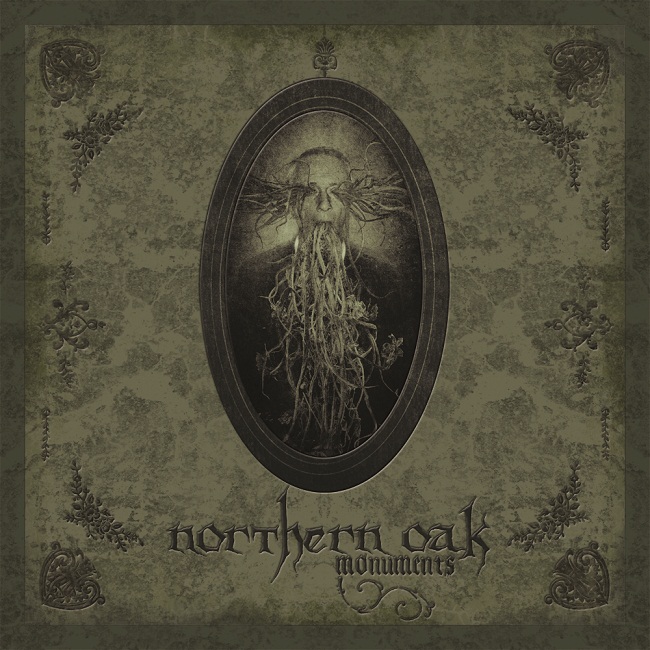Fusions are fickle things. Some that seem initially fruitful quickly date, sounding to ears beyond their immediate time and place of production like one thing stuck to another thing; others seek a level at which whatever edge their parent styles possess is lost in the anodyne mush of a lowest common denominator. Folk and metal might strike some as unlikely bedfellows, but they have a history together. The metal part of Northern Oak’s fusion casts a moderately wide net, but it takes in black metal along the way, which has had an interesting relationship with various folk musics, one that has been nuanced, and sometimes tainted, by the place of such musics in nationalist discourses. One might expect such a brutal sub-genre to simply drown any acoustic music it was paired with, but there’s a lot you can do in the mix, as evidenced by, for example, the Romanian band Negura Bunget’s haunting and atmospheric album Vîrstele Pamîntului. Northern Oak take a similar sonic approach, and let the gentler voices ride above the sturm und drang of the drums, bass and guitars.
This is a beautifully packaged album, whose artwork achieves an effective visual equivalent to its sounds, combining the gothicly fantastical tropes of metal sleeve design with the organic stylings of a past era of folk rock (and recalling the atmosphere of Alan Moore era Swamp Thing along the way). This well judged outer is happily matched by the integrated nature of the sounds. It is a probably unintended consequence of the subordination of the riffery to other elements of the arrangement, not just on Monuments, but also in the work of other bands that take a similar approach, that the sound comes to resemble shoegaze. The sheer power of metal guitars demands prominence, and as soon as other elements are given equal status, particularly gentle acoustic elements, their angles and hammer-blows blur into an atmospheric continuum. The collapse into a spacey wash is prevented largely by the usual positioning of the warm, agile bass, front and centre with the folk elements (and the guitars are naturally not swimming in reverb like shoegaze guitars).
The vocals are extreme metal style, although they tend toward a menacing whisper rather than a bestial snarl, and as such they call to mind the vocal delivery of electro-industrial acts such as Funker Vogt. The arrangements are central to the sound stylistic integration of the fusion, working with rock and folk elements as the parts of a single orchestra, rather than attempting to cram them together into a single texture. Such textural unity is at its most seamless when the rock texture is emphatically black metal, but such conditions usually only apply for a section at a time, as in ‘Pavane In G Minor’: the material bridges the harmonic languages of rock (which is usually a modal/ rhythmic language in any case) and of English folk, and it is delivered in equal measure by both sides of the folk/ metal equation, exploiting the whole ensemble’s dynamic potential to the full (although the mix has been mastered with a little too much compression for my taste).
We live in a world in which popular assumptions around mutual exclusivities of taste are usually insupportable. It’s actually a pretty usual thing for the same people to like folk, particularly English folk, and extreme varieties of metal, but a band like Northern Oak go a step beyond catholic taste, and make little or no distinction between the two. It’s all just the music they like. This is an album of atmospheres, of rich harmonic narratives and moving melodies, but it also an album of Wagnerian martial potency and furious kinesis. The sheer munitionary power of a metal rhythm section allows what is in fact a relatively modest ensemble to conduct itself like a large orchestra, and to tackle musical themes of a commensurate scope and drama. Much of what passes for ‘symphonic metal’ bears more resemblance to operatic aria: this is episodically lyric in form, as is the case with most popular music albums, but its dynamic pacing across the entirety of the release comes far closer to deserving the ‘symphonic’ monicker than most music that is not actually through-composed. Monuments is a very creative piece of work, both in the way it marshals its musical resources, and in the way it exploits them. And it sounds bloody good to boot, in case I haven’t made that clear.





